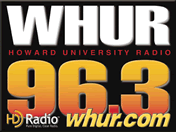Related Research Articles
Satellite radio is defined by the International Telecommunication Union (ITU)'s ITU Radio Regulations (RR) as a broadcasting-satellite service. The satellite's signals are broadcast nationwide, across a much wider geographical area than terrestrial radio stations, and the service is primarily intended for the occupants of motor vehicles. It is available by subscription, mostly commercial free, and offers subscribers more stations and a wider variety of programming options than terrestrial radio.

XM Satellite Radio (XM) was one of the three satellite radio (SDARS) and online radio services in the United States and Canada, operated by Sirius XM Holdings. It provided pay-for-service radio, analogous to subscription cable television. Its service included 73 different music channels, 39 news, sports, talk and entertainment channels, 21 regional traffic and weather channels, and 23 play-by-play sports channels. XM channels were identified by Arbitron with the label "XM".

Radio broadcasting is transmission of audio (sound), sometimes with related metadata, by radio waves to radio receivers belonging to a public audience. In terrestrial radio broadcasting the radio waves are broadcast by a land-based radio station, while in satellite radio the radio waves are broadcast by a satellite in Earth orbit. To receive the content the listener must have a broadcast radio receiver (radio). Stations are often affiliated with a radio network which provides content in a common radio format, either in broadcast syndication or simulcast or both. Radio stations broadcast with several different types of modulation: AM radio stations transmit in AM, FM radio stations transmit in FM, which are older analog audio standards, while newer digital radio stations transmit in several digital audio standards: DAB, HD radio, DRM. Television broadcasting is a separate service which also uses radio frequencies to broadcast television (video) signals.
Digital radio is the use of digital technology to transmit or receive across the radio spectrum. Digital transmission by radio waves includes digital broadcasting, and especially digital audio radio services.

Sirius Satellite Radio was a satellite radio (SDARS) and online radio service operating in North America, owned by Sirius XM Holdings.

WMMR is a commercial FM radio station licensed to serve Philadelphia, Pennsylvania. The station is owned by the Beasley Broadcast Group, through licensee Beasley Media Group, LLC, and broadcasts an active rock radio format. Studios and offices are located in Bala Cynwyd and the tower used by the station is atop One Liberty Place at.
A broadcast license is a type of spectrum license granting the licensee permission to use a portion of the radio frequency spectrum in a given geographical area for broadcasting purposes. The licenses generally include restrictions, which vary from band to band.

WLTW is an adult contemporary radio station licensed to New York City and serving the New York metropolitan area. WLTW is owned by iHeartMedia and broadcasts from studios in the former AT&T Building in the Tribeca neighborhood of Manhattan; its transmitter is located at the Empire State Building.
WODE-FM is a commercial FM radio station licensed to serve Easton, Pennsylvania. The station's service contour covers the Lehigh Valley area of Pennsylvania and New Jersey.

WIAD is a commercial FM radio station licensed to Bethesda, Maryland, and serving the Washington metropolitan area. The station is owned by Audacy, Inc., through licensee Audacy License, LLC, and broadcasts a classic hits radio format, branded as "94.7 The Drive". The studios and offices are on Half Street SE near the Navy Yard in Southeast Washington.

WCSP-FM, also known as C-SPAN Radio, is a radio station owned by the Cable-Satellite Public Affairs Network (C-SPAN) in Washington, D.C. The station is licensed to C-SPAN's corporate owner, the National Cable Satellite Corporation, and broadcasts on 90.1 MHz 24 hours a day. Its studios are located near Capitol Hill in C-SPAN’s headquarters. In addition to WCSP-FM, C-SPAN Radio programming is also available online at c-span.org and via satellite radio on SiriusXM channel 455. WCSP-FM broadcasts in the HD (digital) format.

WGCI-FM is an urban contemporary radio station that is licensed to Chicago, Illinois, serving the Chicago metropolitan area and Northwest Indiana. It is owned and operated by iHeartMedia.

WHUR-FM is an urban adult contemporary radio station that is licensed to Washington D.C., and serving the Metro D.C. area. It is owned and operated by Howard University, making it one of the few commercial radio stations in the United States to be owned by a college or university, as well as being the only independent, locally-owned station in the Washington, D.C. area. Also, the staff of the station mentors the students of the university's school of communications. The studios are located on campus in its Lower Quad portion, and the transmitter tower is based in the Tenleytown neighborhood. It is also co-owned with its television partner, WHUT-TV, one of D.C.'s PBS affiliates.

WSIX-FM is a radio station licensed to serve Nashville, Tennessee. Owned by iHeartMedia, the station broadcasts a country music format. WSIX's studios are located in Nashville's Music Row district and the transmitter site is in Forest Hills, Tennessee.
WKRB is an FM radio station licensed to Brooklyn, New York. It is a music based station based at and controlled by Kingsborough Community College, with a transmitter in Manhattan Beach. It also is the official station of the Brooklyn Cyclones, and is a broadcast partner of the New York Islanders hockey club. In 2006, WKRB changed its frequency from 90.9 MHz to 90.3 MHz, but kept its call letters.
Sirius XM Holdings Inc. is an American broadcasting company headquartered in Midtown Manhattan, New York City that provides satellite radio and online radio services operating in the United States. It was formed by the 2008 merger of Sirius Satellite Radio and XM Satellite Radio, merging them into SiriusXM Radio. The company also has a 70% equity interest in Sirius XM Canada, an affiliate company that provides Sirius and XM service in Canada. On May 21, 2013, Sirius XM Holdings, Inc. was incorporated, and in January 2020, Sirius XM reorganized their corporate structure, which made Sirius XM Radio Inc. a direct, wholly owned subsidiary of Sirius XM Holdings, Inc.

A broadcast relay station, also known as a satellite station, relay transmitter, broadcast translator (U.S.), re-broadcaster (Canada), repeater or complementary station (Mexico), is a broadcast transmitter which repeats the signal of a radio or television station to an area not covered by the originating station. It expands the broadcast range of a television or radio station beyond the primary signal's original coverage or improves service in the original coverage area. The stations may be used to create a single-frequency network. They may also be used by an AM or FM radio station to establish a presence on the other band.

KNCK-FM is a hot adult contemporary formatted broadcast radio station licensed to Concordia, Kansas, and serving the communities of Concordia, Belleville, Minneapolis, and Beloit, Kansas, as well as North Central Kansas and South Central Nebraska. The station formerly carried most of its programming from ABC Radio's "Young AC" Network, until the station went to a more local presentation in 2010.
Digital audio radio service (DARS) refers to any type of digital radio program service. In the United States it is the official FCC term for digital radio services.
Sirius XM Canada Holdings Inc. is a Canadian radio broadcasting company, which operates as a Canadian affiliate of Sirius XM Radio. The company received approval from the Canadian Radio-television and Telecommunications Commission on April 11, 2011 to merge the formerly distinct XM Radio Canada and Sirius Canada services, following the merger of XM Satellite Radio and Sirius Satellite Radio in the United States. The merger was subsequently completed as of June 21, 2011.
References
- ↑ "Archived copy". Archived from the original on 2003-06-06. Retrieved 2007-05-25.
{{cite web}}: CS1 maint: archived copy as title (link) FCC sets aside spectrum for SDARS - ↑ Article about Primosphere L.P. that refers to its bid and XM/Sirius foreign ownership issues
- ↑ http://www.fcc.gov/Daily_Releases/Daily_Digest/1997/dd971028.html FCC Decision on Primosphere
- ↑ "10-K405" . Retrieved 2018-05-16. Primosphere petitions for foreign ownership restrictions on SDARS licensees.
- ↑ http://www.accessmylibrary.com/coms2/summary_0286-7796382_ITM Sirius Delays Launch To Conserve Funds
- ↑ http://siriusbuzz.com/primosphere-weighs-in-on-merger-again.php Primosphere weighs in on merger again (Siriusbuzz.com)